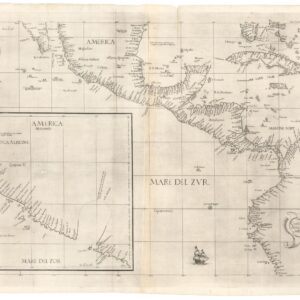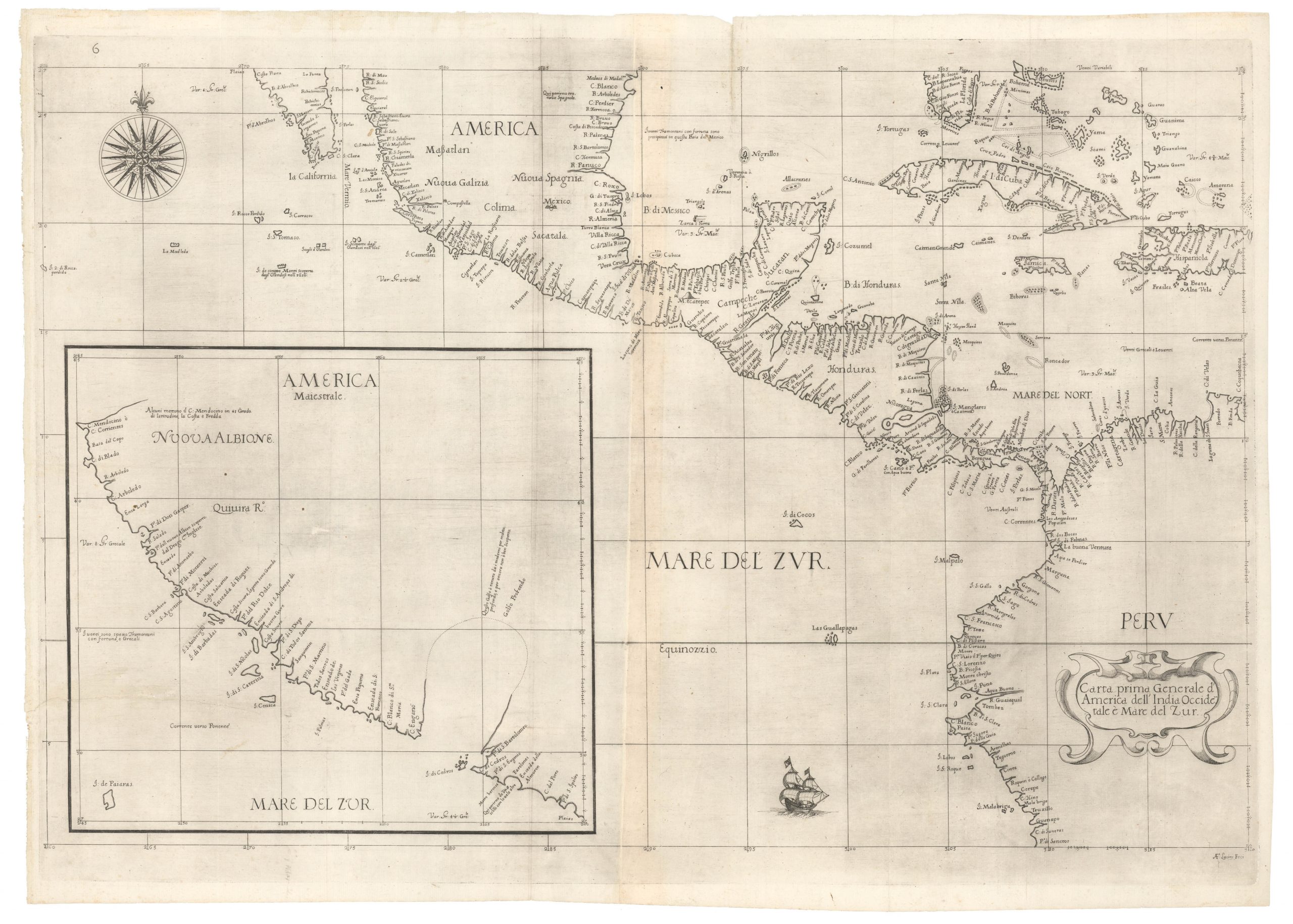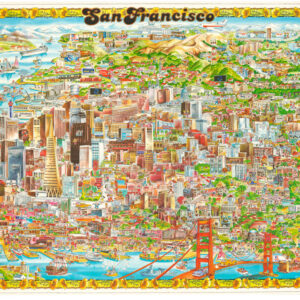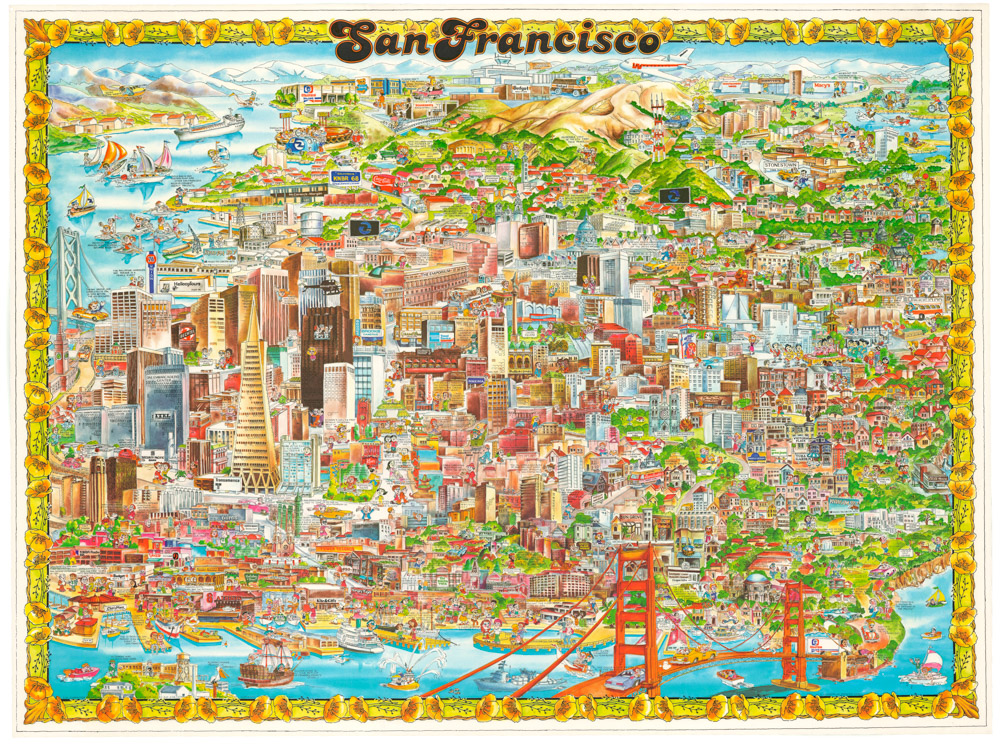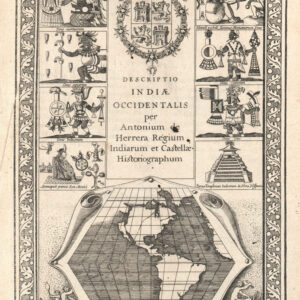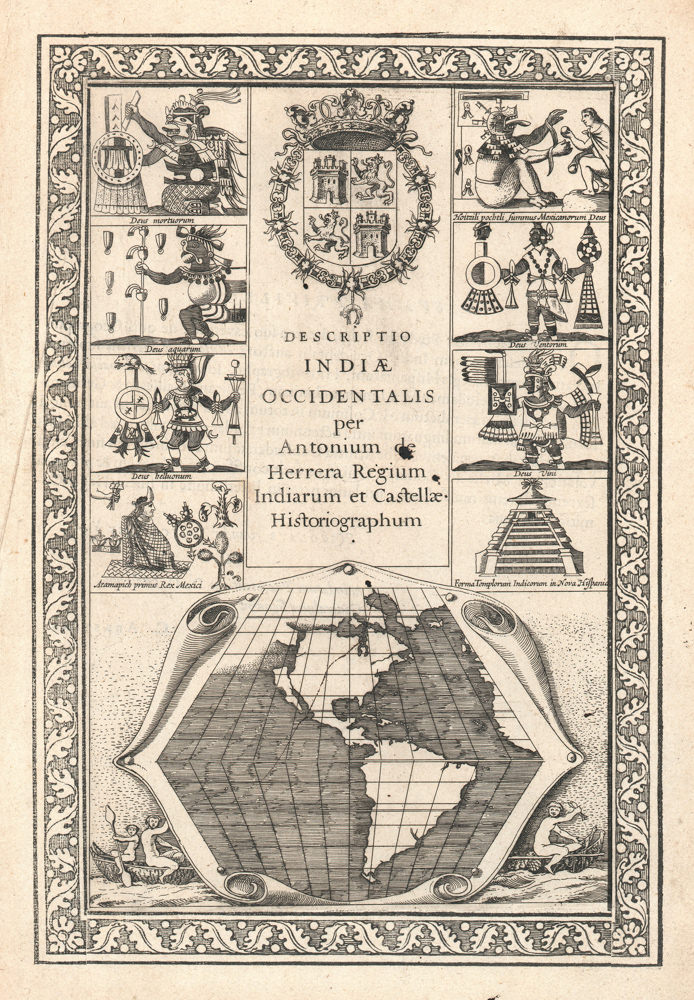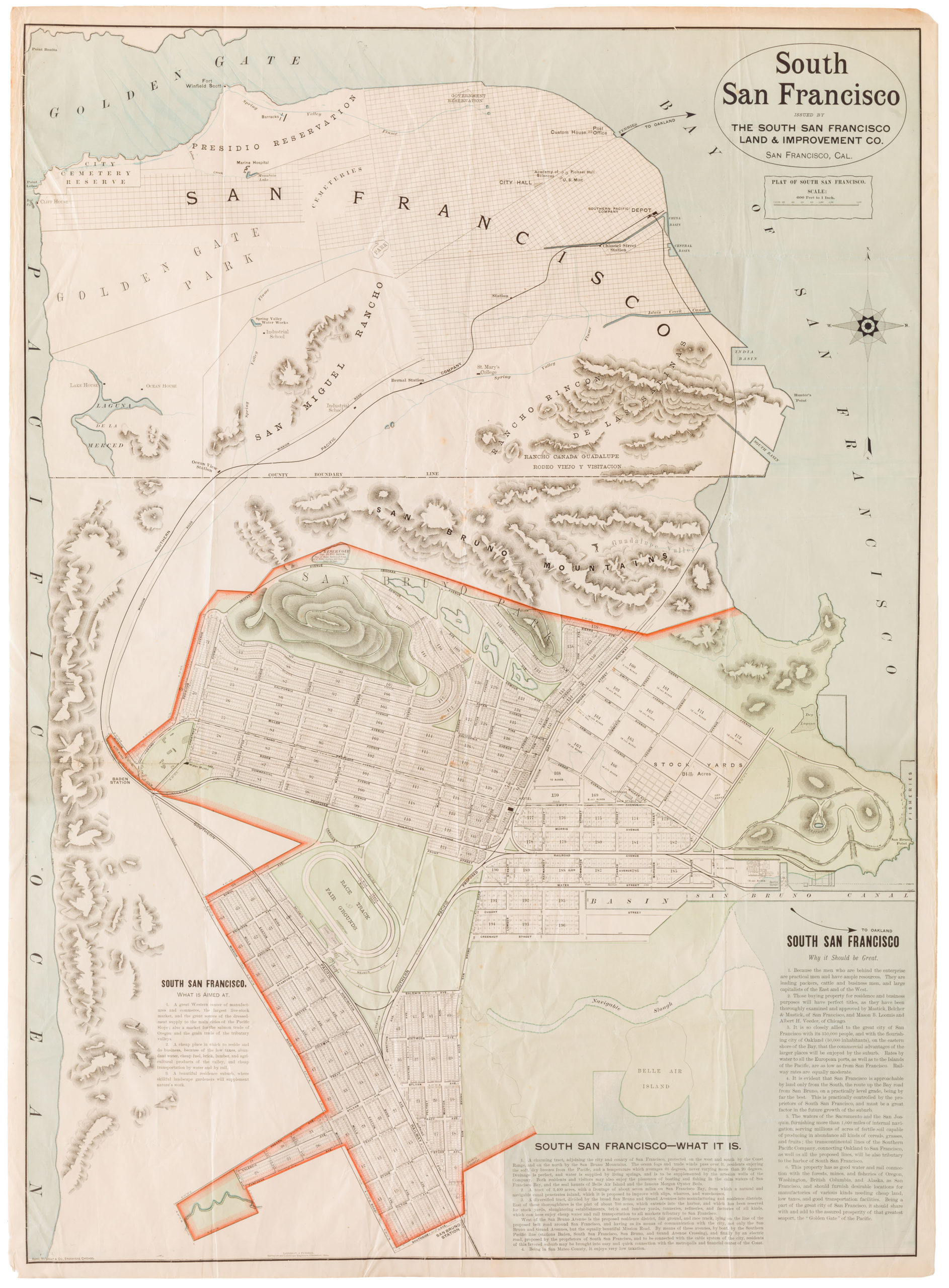A stunning bird’s-eye-view of Yosemite National Park by one of the most important innovators of ‘natural cartography’ in the 20th century.
Yosemite.
$2,400
1 in stock
Description
Soar above one of America’s greatest natural treasures in Heinrich Berann’s modern take on the bird’s-eye-view. Berann is known as a great innovator in producing views and depictions of California’s National Parks. This fantastic and highly detailed example of Berann’s work depicts Yosemite National Park from above, with the iconic Yosemite Valley forming a central tract through the mountains.
Carved by glaciers into the landscape as a fan of pristine valleys, Yosemite is essentially an ancient drainage system for the Sierra Nevada Mountains. In Berann’s stunning composition, we are treated to a breathtaking vista of this geological complex. The background is dominated by the great peaks of the Sierra Nevada Range (e.g. Mt. Dana, Mt. Gibbs, Mt. Conness, and Matterhorn Peak), many of which are discreetly labeled.
In the foreground, we see the green and lush valleys associated with Yosemite National Park. Despite viewing it from an elevated perspective, well-known details of the park stand out clearly, from the cliff faces of El Capitan and Halfdome to the great waterfalls named Yosemite and Bridalveil. Other more isolated but equally iconic places within the park include Tuolumne Meadows, Tenaya Lake, and Clouds Rest.
The most characteristic features of this landscape are the dramatic valleys carved through the landscape by the last Ice Age. Among this landscape’s lush valleys, we find the Hetch Hetchy Reservoir just to the north of Yosemite Valley itself. Prior to the selection of this particular valley as the locus of San Francisco’s main freshwater reservoir, Hetch Hetchy was renewed for its pristine beauty. John Muir, for example, fought hand and nail to get the project shelved, arguing that a unique natural complex would be sacrificed.
This work is among the most spectacular and detailed views of Yosemite National Park that the National Park Services (NPS) have produced.
Context is Everything
Although Austrian by birth, Heinrich Berann was a great innovator in shaping our understanding of National Parks in America. As an artist, Berann was renowned for his detailed and imaginative landscapes. He has left an indelible mark on the National Park Service (NPS) over the past 25 years, extending his influence beyond his employment in the services. His most tangible contribution lies in his four intricate panoramic paintings of American national parks created between 1987 and 1994 (available in digital form on the NPS website). Neatline’s example is the most celebrated and popular of these views.
One of the things that made Berann’s approach so innovative and engaging for viewers was the use of data from new sources like NASA and the U.S. Geological Survey. His approach inspired subsequent mapping techniques, influencing the move to 3D oblique views that enhance visitors’ experience of national parks like Wrangell-St. Elias in Alaska. Berann’s maps were effective because they gave visitors a new, more profound understanding of the natural processes that led to this spectacular landscape’s creation. It is no exaggeration to claim that Berann’s distinctive style, characterized by vibrant but not strictly realistic colors, transformed this type of cartography. His work resonates with the NPS’s goal of evoking awe and wonder in park visitors. His panoramas excel in conveying the majesty and allure of these natural treasures.
Despite working from the same topographic maps and aerial photographs that his contemporaries did, Berann’s astonishing maps constitute artistic aspirations that capture the essence of America’s National Parks. For more on Berann’s significant impact on NPS cartography, we recommend this National Geographic article on his work: https://www.nationalgeographic.com/culture/article/berann-national-parks-illustration-maps-culture
Cartographer(s):
Heinrich Caesar Berann (31 March 1915 – 4 December 1999) was an Austrian painter and cartographer who achieved world fame for his panoramic maps that combined precision cartography with classical painting. His work includes maps for the Olympic Games and National Geographic Magazine, but his most decisive contribution was four panoramic posters for the National Park Service.
Condition Description
Very good.
References
